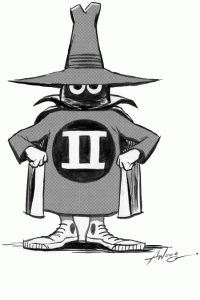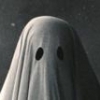Search the Community
Showing results for tags 'paul'.
-
I have utmost respect for this person really. A life well-lived despite all the adversaries he faced. RIP Sir. ‘Polio Paul,’ who spent most of the past 70 years in an iron lung, dies at 78 https://amp.cnn.com/cnn/2024/03/13/health/paul-alexander-polio-iron-lung
-
R.I.P. http://news.asiaone.com/news/showbiz/fast-and-furious-star-paul-walker-40-dies-car-crash-reports From AsiaOne: Fast And Furious star Paul Walker, 40, dies in car crash: Reports AsiaOne Sunday, Dec 01, 2013 Fast and Furious star Paul Walker has died in a car accident, online site TMZ reported on Sunday (Saturday, Los Angeles time). He was 40 years old at the time of death, the report said. According to the report, the actor was riding in a Porsche when it crashed and burst into flames. ABC news later confirmed Walker's death after it received an email from his media representative. The representative said: "Sadly I must confirm that Paul did pass away this afternoon," ABC reported in an online article. An update posted on Paul Walker's official Facebook page said that he was on his way to a charity event with his friend when the accident occurred. The message said: "It is with a truly heavy heart that we must confirm that Paul Walker passed away today in a tragic car accident while attending a charity event for his organization Reach Out Worldwide. He was a passenger in a friend's car, in which both lost their lives. We appreciate your patience as we too are stunned and saddened beyond belief by this news. Thank you for keeping his family and friends in your prayers during this very difficult time. We will do our best to keep you apprised on where to send condolences." Besides acting as Brian O'Conner in the Fast and Furious franchise, Paul Walker previously starred in other hit movies including Pleasantville and Varsity Blues.
-
Port of Kusadasi, Turkey. Kusadasi Turkey, is a resort town on Turkey's Aegan coast, on the Asian continent. The nearest major airport is Izmir and the main industry is tourism. Indeed, Kusadasi is a summer tourist town. During winter, the population is under 100,000, with many empty apartments and shops that are closed. Come summer, the population swells to more than 300,000 (some say more than 500,000). We were the only ship (Norwegian Jade) in port that morning. The port is conveniently located right in the main city. The port gates are a short walk from the ship. Even before you exit the gates, there are many shops, though not all were opened during winter. In the picture, you can see a number of yellow cabs waiting for passengers. You could hire cabs off the street if you wished, especially in winter, when there were few tourists. For us, we pre-booked a private tour and the guide was waiting for us just we got off the ship, holding a placard with our names. It was a very easy process to meet her. The highlight of this port would be the ancient city of Ephesus. See this map for Paul's missionary journeys. Paul lived in Ephesus from AD 52 to 54. However, our first stop of the day wasn't Ephesus, but the House of Virgin Mary. It is not clearly recorded where the Virgin Mary spent her last days. However, it is reasonable to believe that Mary's last days were spent in Ephesus, under the care of apostle John. The apostle John was believed to have died in Ephesus, around 100AD. John, the beloved discipline, was the only Apostle that did not die a matyr's death. While nailed to the cross, Jesus entrusted his earthly mother to John. John 19:26-27 "When Jesus therefore saw his mother, and the disciple standing by, whom he loved, he saith unto his mother, Woman, behold thy son! "Then saith he to the disciple, Behold thy mother! And from that hour that disciple took her unto his own home." The house that we were visiting has a history. Please refer to this website for the description - http://www.kusadasi.biz/virgin-mary/ In this video, we meet our guide for the day and proceeded to the House of the Virgin Mary as our first stop on this tour. Today, we had a driver and a licensed tour guide. Therefore, there was plenty of useful commentary for us. At the House of the Virgin Mary, it was not crowded at all. We were told, during summer, the lines would be really long. The actual house is not very big. This was the entrance. No photos and videos were allowed inside but you can find some photos of the interior from the Internet. The Roman Catholic Church has never pronounced on the authenticity of the house of Virgin Mary, presumably because of the lack of scientific evidence. However, several Popes have visited the site, including Pope Paul VI (1967), Pope John Paul II (1979) and Pope Benedict XVI (2006). This would be the place where they conduct the services or prayer services. We spent about 45 minutes at the Virgin Mary House and surrounding areas. Our next stop would be the highlight of the trip, the ancient city of Ephesus. Here is the video. In this video, we enter the ancient ruins via the Magnesia gate. We were blessed with good weather (the day before it was pouring). Bear in mind this place is completely unsheltered, other than the Roman Terrace Houses that we will visit in Part 2 of the video. Therefore, it would be wise to bring an umbrella. Compared to Pompeii, the ruins here are extremely well kept. A real wonder and marvel to behold. The Magnesia Gates entrance into Ephesus. Entrance fees were 30 Turkish Lira. This does not include the Terrace Houses, which cost an additional 15 Turkish Lira. The site was beautifully kept. Sense of wonderment as I stepped in. Look at this sign. We learnt a lot about this sign during our visit. Our guide took pains to explain to us what it meant - "Jesus Christ, the Son of God." However, we subsequently found out that our guide's explanation was most likely to be wrong. This sign was not a Christogram, but more likely an ancient game played by Roman soldiers. This video explains the sign, as told to us by our guide Remember, the early church was persecuted. Paul, in Ephesus, faced a very hostile city whose inhabitants mostly worshipped pagan Gods, especially the Artemis (or Diana). But upon further research when I came home, I think the guide's story of this sign is wrong. This marking was most likely an ancient game played by Romans. More pictures of the ancient site. Here, they let you wander around freely and touch all the marble columns, if you so wished. Check out this marble column and the piece of rebar in the middle. This was how the Romans strengthened their columns, using lead rebars. Check out the video where the guide gives a good description. A tour group passing by. This was winter and at times, there was some congestion. Again, be careful when there are large crowds, especially against petty theft like pickpockets. This was nice. The Goddess of Nike. Nike was a goddess that personified victory. She is seen with wings. With a walkway like this, you can really have a good idea of how grand this place must have been, 2000 years ago. Next, we would enter the Roman Terrace Houses. This was where the richest people lived. Getting in to view the terrace houses required a separate ticket, but it was well worth it. Here is the video. This place was cool. There was a huge shelter protecting the Terrace houses. It looked like excavation work was still going on. Take note that this site is definitely not disabled friendly. Plenty of steep steps to climb. The metal steps are all very new and sturdy. Take it slow and easy. Admire the Terrace houses along the way. Awesome. They even found some grafitti on the walls. The drawings mainly show gladiators, caricatures and animals. The grafitti included names of persons, poems and even declarations of love. Especially interesting is a list goods and necessities of everyday life, including their prices. E.g. Barley 12 denarii, 1/2 ass; Onions 3 asses, entrance to the thermal bath 12 asses. In the Roman currency system, a denarious was a small silver coin, with the value of 10 asses (1 ass is a bronze, later copper coin) Just look at how well preserved the walls and flooring of these Terrace houses were. Once we exited the Terrace Houses, there were good views of the Ephesus site. Take note that we now had to climb down a long flight of stairs which could be slippery when wet, before we got back to the Ephesus ancient city. This is the video for the Library of Celsus and the Theatre. Our next stop would be the library of Celsus. From wiki, I learnt that this library was built in honour of Roman Senator Tiberius Julius Celsus Polemaeanus, hence the name Library of Celsus. Celsus had been consul in 92AD, governor of Asia in 115D, and a wealthy and popular local ciizen. He was Greek, but honoured as both a Greek and Roman in the library itself. Celsus paid for the construction of the library with his own personal wealth. The library was built to store 12,000 scrolls and to serve as a monumental tomb for Celsus, who was buried beneath the library. It was unusual to be buried within a library or even within city limits, so this was a special honour for Celsus. This pictures gives you a good sense of how magnificent the library would have been, 2,000 years ago. After the library, we went to the famous theater. This photograph (off a signboard) shows how the theatre looked like around 1900, just as the site was being excavated. Hard to imagine at that time that the theatre would have the capacity of 25,000 seats. The Theatre of Ephesus is mentioned in the Bible (Acts 19:23-41), the theatre was the site of the riot of silversmiths who made figures of pagan idols like Artemis (Diana). A silversmith by the name of Demetrius was named to have rallied fellow silversmiths to his cause. They stirred up the people of Ephesus, who were confused, and all rushed to the theatre. Acts 19:34 records the people in the theatre as chanting "Great is the Artemis (Diana) of Ephesus!" This is the theatre today. Pretty grand. The Austrians have been heavily involved in the excavation of Ephesus. This is the second of such signs I saw that day. Earlier, the guide told us that the Austrians built the roof over the Terrace Houses too. Took this picture of a happy cat resting on a broken Roman column. Overall, it was a very impressive visit to the ancient city of Ephesus. There was a lot to see. We were grateful that the skies held up, though it got cloudy as the morning wore on. We exited Ephesus via the Harbour Gate (recall we entered from the Magnesia Gate) and our next stop would be lunch at a Turkish Restaurant. Lunch was included in our tour. For lunch, the guide brought us to a restaurant called Agora Restaurant. According to tripadvisor, this restaurant was fairly well reviewed. We didn't have any choices for the lunch. We were served with some starters that included pita bread, side dishes, salads. This was followed by the main which consisted of two types of grilled meats, rice. I noticed many other tourists in the restaurants. Other tour groups (including cab drivers) also brought their passengers here. It looks like the restaurant has tied up with the various tour operators. Overall, I found the food just ok, nothing special. After lunch, it started to drizzle. As we had seen the most important sight for the day (ancient Ephesus), we were not sure where else to go. The guide asked if we wanted to see some carpet weaving (i.e. carpet shop). Since this was our first time in Turkey, we said ok. The place we went to was called Bartok Authentic Looms. On hindsight, while the visit was quite interesting, we were pretty much like captives during the time there. The objective of the place was to sell you carpets, expensive ones at that. I think a visit to a carpet factory was included even in the Ship's Tours, as stated in the excursion forms. Here was a video I took of the carpet factory visit. To cut the long story short, after the elaborate sales pitch which literally included the sales staff throwing carpets at us. We ended up buying 2 small carpets at US$50 each. By the time we were done with the carpet store, it was really raining. We went to the ruins of the Temple of Artemis (one of the seven ancient wonders of the world), but due to the rain, the family did not get off the bus. I got down to take a quick look and made a short video before getting back to the mini-bus. We arrived back in port in good time. We walked around the port area as well as the beachfront. While it was drizzling slightly, it was still fun to explore the place. There were shops selling "Genuine Fake Watches". Oxymoron. Yes, Genuine Fakes! That was our day in Kusadasi, Turkey, for the ancient city of Ephesus. It was a real privilege to see the ancient ruins of Ephesus up close and personal. It certainly brought to life many of the verses that we had read in the Bible. Thanks for reading!
- 21 replies
-
- 13
-

-
Hi All: Look out for this bugger in his motorbike ( 5144)... Who DO NOT queue up to fill his petrol at west coast area this late noon While I was pulling my car closer to the pump to fill my tank, this bugger just cut in from behind and started to pump... I got down my car and asked him, what the fxxk he is doing? ...as I nearly reversed into him. This bugger simply ignored... continued to pump his petrol and DID NoT even apologies throughout, then drove away...Even the pump attendant also commented" this guy is barbaric" As his jumpsuit indicated " PAUL INTERTEK"... May you meet your match soon... I am now thinking of loading his photo here...so that all can be aware of such irresponsible rider.
-
This is dedicated to Galantspeedz this is a more balance view from a 3rd party Taking 25 years as the generational baseline, Singapore is in its third generation since gaining political autonomy from the Malay Federation in 1959 (independence came with its expulsion from the Federation in 1965). Led by 87-year old Lee Kwan Yew, the first generation of PAP leaders ruled with tight control until 1990, in an era when Singapore's image as an austere and puritanical authoritarian state was forged. The second generation of hand-picked successors, who began the slow process of political and social liberalization and orchestrated the emergence of the country as a major transportation, logistics and financial hub, is singing its political swan song today. This year's election marks the transition to the third generation of political leadership and not all has gone as planned for the PAP. Voting is mandatory in Singapore. Yet spoiled ballots and non-voters amounted to nearly 10 percent of the 2006 electorate. In other words, the signs of discontent were already present five years ago. This year there has been a resurgence of political opposition led by the Workers Party, the Reform Party and the Singapore Democratic Party. In marked contrast to previous elections, 82 of the 87 parliamentary seats will be contested. Among the ranks of the opposition are defectors from the PAP, former government-sponsored overseas scholars (who usually pay their scholarship debt by returning to assume bureaucratic positions and joining the PAP), former Internal Security Act detainees (the ISA allows for the indefinite detention of suspects without charge and some of the current opposition candidates have spent long periods in confinement) and political exiles. Most of the new candidates are in their mid 20s to mid 40s, thereby representing a coming of age for their generation of free thinkers. In response, the PAP has trotted out the usually ensemble of former bureaucrats and politicized retired military officers, interspersed with a handful of younger neophytes (including one whose qualifications for office apparently are that she is the wife of the Prime Minister's executive assistant and has a penchant for shopping--the latter being Singapore's national pastime). What is most revealing is that the PAP is no longer able to hide its internal divisions, with leading officials, Ministers and even the Minister Mentor (how's that for a title?) Lee Kwan Yew himself openly disagreeing about issues of politics, policy and social construction. Sensing a shift in the public mood, some PAP candidates have withdrawn from the election. All of this underscores something that the Minister Mentor said last year: that the PAP must rejuvenate or stagnate, and that democracy would only come when the PAP proved incapable of responding to public expectations as a result of its stagnation. The trouble for the PAP is that the elections have come too quickly for a major re-generation of its cadres, which in a talent-thin environment such as Singapore (owing to its population size, as anyone who looks beyond the front benches of the New Zealand parliament will understand), means that the moment of political reckoning has come much sooner than the 25 years Lee Kwan Yew envisioned. Even worse for the PAP, although the government controls all of the mainstream media in Singapore, including the Straits Times and the telecommunications giant MediaCorp, it has been unable to staunch the flow of internet criticism of its personnel and policies, or the grassroots mobilization of support for the opposition. Much concern has been voiced about increasing inefficiencies in public services, the high cost of living, the loss of white collar jobs to foreigners, and the government's astronomical pay scales (the Prime Minister--Lee Kwan Yew's son--is paid S$4.5 million per/year, senior ministers make S$3 million and parliamentary backbenchers start at S$150,000. In fact according to the Economist, Singapore has the second highest ratio of political leader's pay to the country's GDP per person, with the average salary of US$2,183,516). In the face of what looks to be the possibility of losing previously safe seats amid an unprecedented wave of electoral contestation, the PAP has resorted to fear-mongering, focusing on the tired old canards of economic insecurity, Malay sedition, jihadist terrorism, unskilled foreign workers from the sub-continent and mainland China bringing crime and stealing local jobs, and gay rights (homosexuality is illegal in Singapore but as part of the social liberalization process enforcement of sodomy laws has been weak and episodic over the last decade. This has been a major concern of social conservatives, including the very large number of ethnic Chinese Christians found on the island who are a core PAP constituency). Is speaks ominously of hidden agendas and questions why the opposition would seek to take control of government (apparently failing to recognize that the purpose of political parties include competing for the authority to govern or at least influence government policy). Yet the more it raises the specter of Singapore returning to its polyglot swampland brothel and opium den past, the more the PAP is ridiculed for being out of touch with the wants and needs of contemporary Singaporeans. This means that this election and its aftermath will constitute a critical juncture in Singaporean history. It will set the stage for the next critical juncture, which will be the occasion and aftermath of Lee Kwan Yew's death. The notion of critical juncture is important and needs explaining. Using economics-derived path dependency analysis (in which human behavior is "locked in" by past institutional practice the more that practice is routinised over time), critical junctures are historical moments when decisive choices are made within given institutional parameters that set the future course of events (the most common used analogies are the "fork in the road" and
-
Thanks for all the tips given to us in June. Hope that you have trained a disciple for Euro 2012. RIP.
-
After the much publicize Michael Jackson's death, on lesser fanfare is another legend among the guitar world. Rock, Jazz and guitar hero fans will be sad to know the passing of Les Paul. Even the guitar, named after him, the Gibson Les Paul, is also a legend by itself.. http://sg.news.yahoo.com/afp/20090814/tts-...ul-972e412.html NEW YORK (AFP) - - Les Paul, a virtuoso guitarist and inventor who shaped the sound of rock 'n roll, has died in New York state, Gibson Guitar company said. He was 94. ADVERTISEMENT Paul "passed away today from complications of severe pneumonia at White Plains Hospital in White Plains, New York, surrounded by family and loved ones," said Gibson, producer of the renowned Les Paul guitar. Gibson called Paul "one of the foremost influences on 20th century sound." First known as a brilliant guitarist, Paul went on to change the course of music, pioneering the shift from acoustic to electric guitar and inventing multitrack recording. Born Lester William Polsfuss in Waukesha, Wisconsin on June 9, 1915, Paul was a child guitar prodigy who dropped out of school at 17 to play with Sunny Joe Wolverton's Radio Band. He played jazz and hillbilly picking, made his first recordings in 1936, and in 1938 moved to New York to star on national radio. By his mid-thirties, Paul was one of the country's most sought-after guitarists in a career that saw him play alongside greats like Nat King Cole and Louis Armstrong. Combining jazz, western swing and hillbilly sounds, he formed the Les Paul trio, a regular guest on Bing Crosby's hit radio show. His first number one with Crosby and the trio, "It's been a long, long time," topped a million sales. Late in his career, he recovered from ill health to perform regularly in New York. In 2005 he released a double-Grammy winning album, "Les Paul and Friends: American Made World Played," with electric guitar heroes including Keith Richards and Eric Clapton. His biggest achievements, though, were in the technical realm, where he helped pioneer solid-bodied electric guitars and multitrack recording, a technique allowing groups to record different parts at different times, then mix them together. A tinkerer from the time he was a boy, Paul's big idea came in 1940 or 1941 when he strung a flat board like a guitar and attached pickups. "The log," as it was dubbed, created an electronic signal that could be amplified and processed, opening a new realm to music. Gibson Guitars began making the Les Paul model in 1952 and the guitar soon became a rock music standard. Paul eventually held the unusual honor of being the only person to be inducted into the Grammy Hall of Fame, the Rock and Roll Hall of Fame, the National Inventors Hall of Fame, and the National Broadcasters Hall of Fame. "I don't think any words can describe the man we know as Les Paul adequately. The English language does not contain words that can pay enough homage to someone like Les," said Dave Berryman, President of Gibson Guitar. "As the 'Father of the Electric Guitar,' he was not only one of the world's greatest innovators but a legend who created, inspired and contributed to the success of musicians around the world." Henry Juszkiewicz, chairman and CEO of Gibson Guitar, said "the world has lost a truly innovative and exceptional human being today." "His musical charm was extraordinary and his techniques unmatched anywhere in the world."
-
Undertaker on trial By Elena Chong, Courts Correspondent Roland Tay (left), 61, is said to have swung a crowbar at Mr Paul Wong Wah Suang, 53, and threatened him with 'bxxxxxd I want to kill you' along a Lavender Street walkway on March 31 last year. -- ST PHOTO: WONG KWAI CHOW A WELL-KNOWN undertaker went on trial on Monday for allegedly threatening a business partner. Tay Hai Choon better known as Roland Tay, 61, is said to have swung a crowbar at Mr Paul Wong Wah Suang, 53, and threatened him with 'bxxxxxd I want to kill you''along a Lavender Street walkway on March 31 last year. He is also accused of punching and kicking Mr Wong. Also being tried with him are his workers, Raj M. Perumal, 45, Suresh Kannan Selvi, 34,and Kelvin Mark Marie, 34, who denied assaulting Mr Wong at about 4.30am that day. A private eye, Mr Dennis Lee, took the stand and recounted the events that day when he accompanied his clients, Ms Wong and his wife, Ms Annie Heng, to the premises to retrieve their things. Ms Heng is a director of All Saints Christian Bereavement, whose other director is Mr Eric Yeo. All Saints Christian Bereavement Services was set up in May 2006 with the involvement of Tay. Tay, who runs Direct Singapore Funeral Services in the same Lavender Street office, has received wide media coverage for overseeing the funerals of murdered China girl Huang Na, Kallang body parts victim Liu Hong Mei and MRT train victim Tan Jee Suan. The All Saints venture soon turned sour after the partners squabbled over money issues. The hearing continues. http://www.straitstimes.com/Breaking...ry_269389.html such coincidence for the name of his partner.. let's see how Paul was attacked
-
- Court
- Undertaker
-
(and 1 more)
Tagged with:
-
As above... can u tahan ppl who always like to paul lampard at ur workplace or school? *.Any similarity is purely coincidental.*











